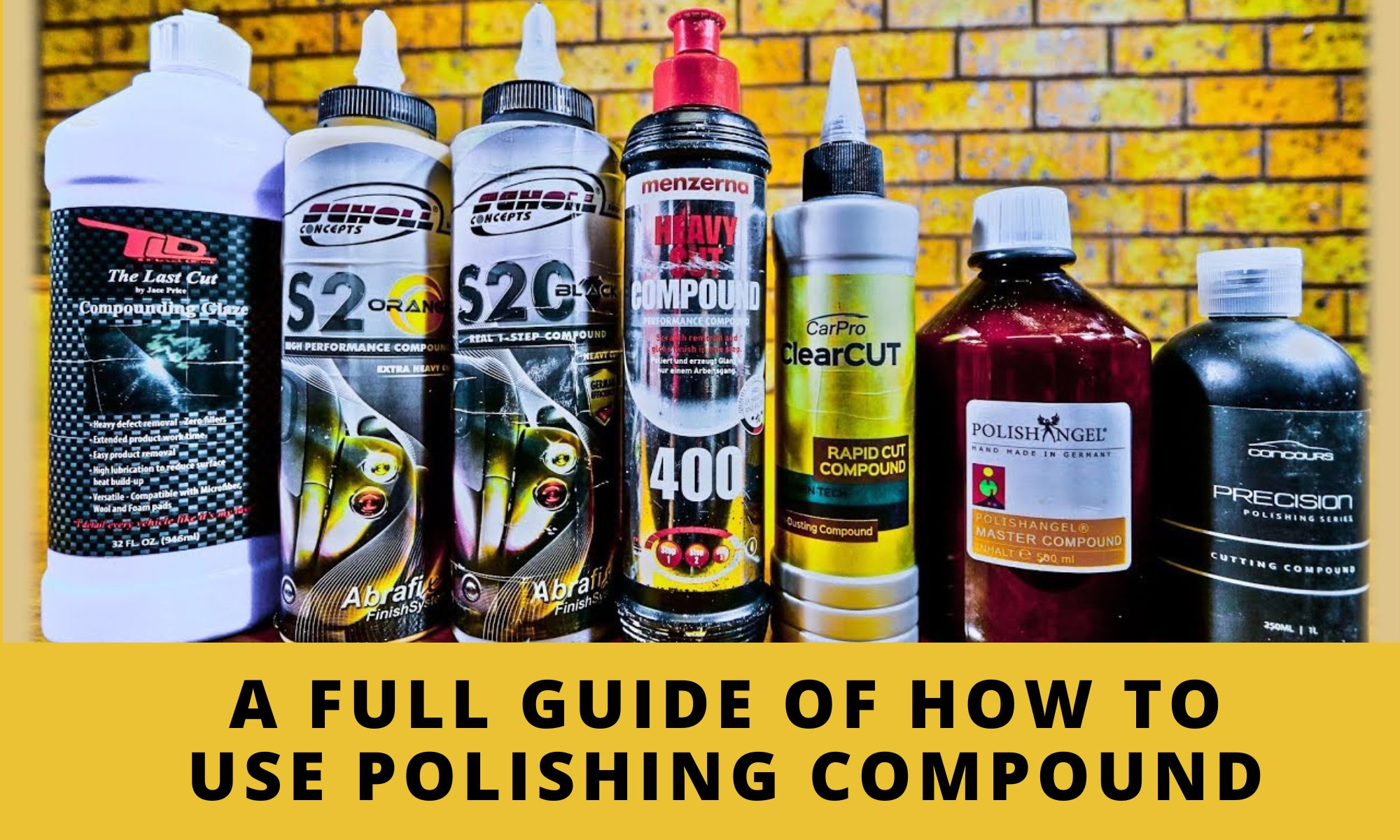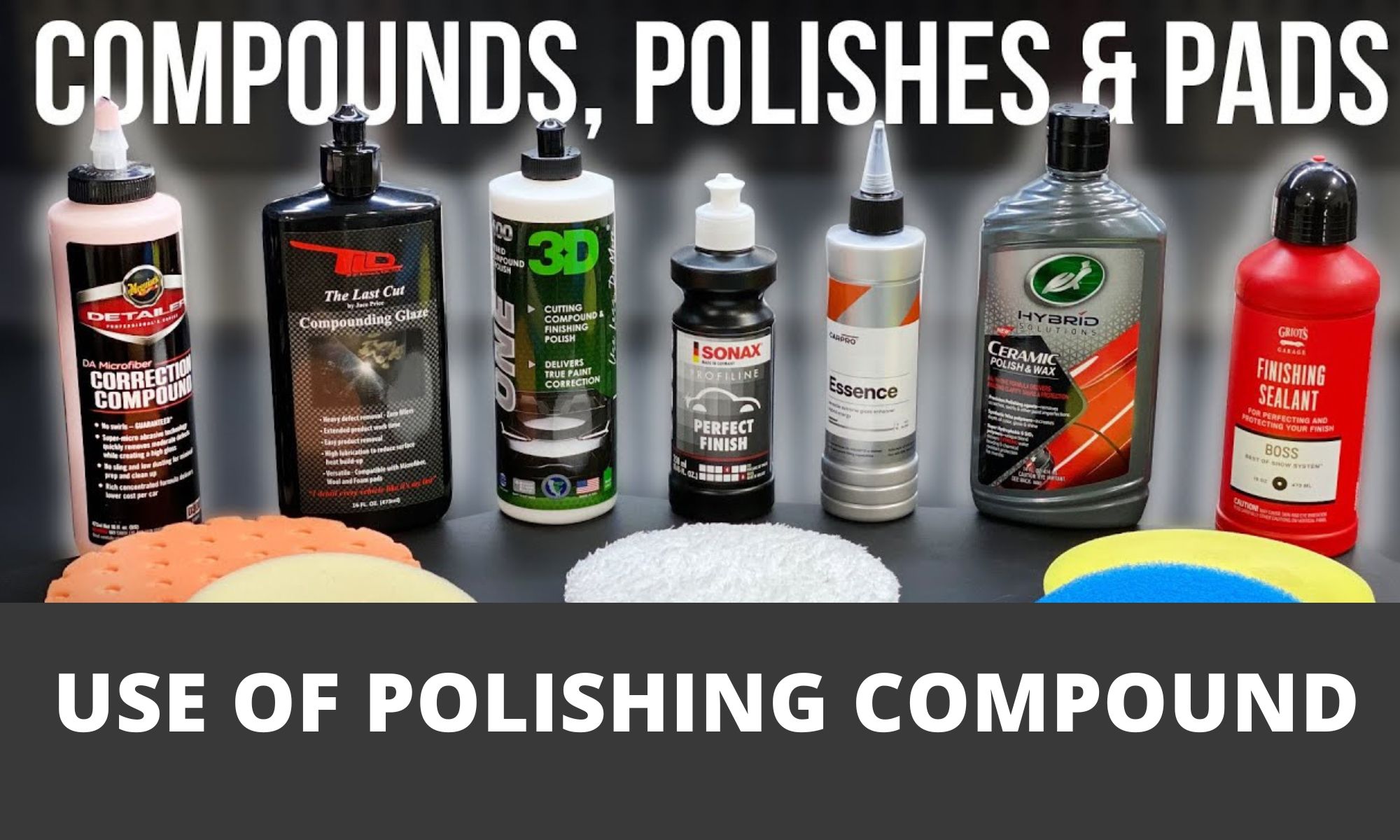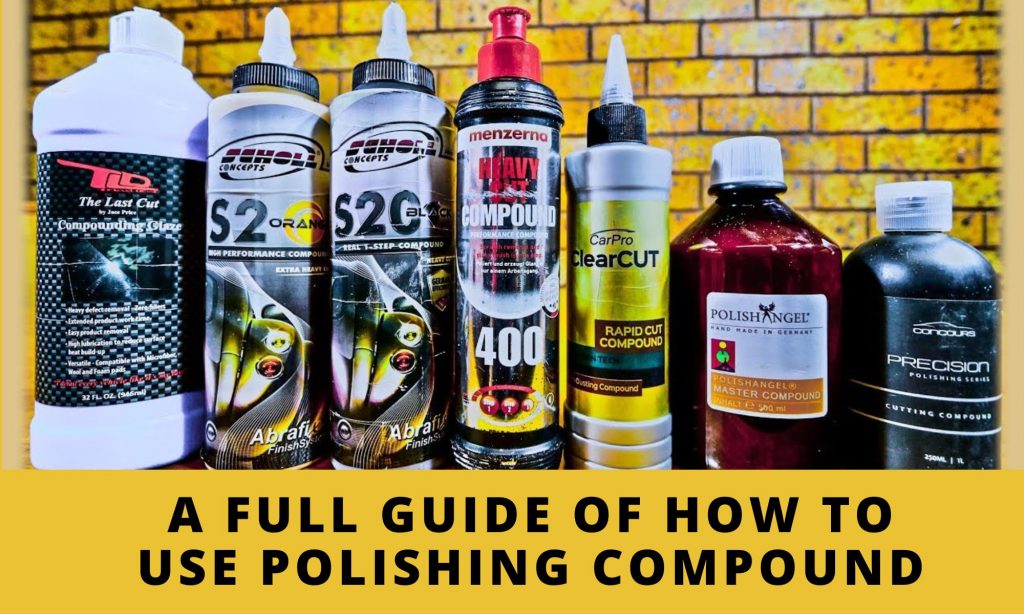If you want to get a high-gloss finish on any surface, you’ll need to use the polishing compound. Here’s a full guide on how to use polishing compound.
Polishing compound is a chemical that is used to restore scratched lacquer on metallic, glass, or other flat or shiny surfaces. The polishing compound will assist you in the concealment of imperfections in the paint of the surface and will also give it a rolled-back look.
First, you need to carefully wash the surface of the paint with soapy water. Then, use an elliptical cleaner or a drill equipped with a disk to remove any remaining marks and scratches. To finish the restoration or polishing procedure of the scratched surface back to its original look, get a smooth towel to fine-touch the polished surface.
The outcome is seen in the way jewelers and metal craftsmen polish their creations. They use a rotating cleaning wheel to apply a polishing compound to the desired spot that needs treatment. It can be used with a buffing device or a rotating wheel brush.
This article will cover how to use polishing compounds properly to create a reflective texture on any metallic surface.

Making a shiny surface like a pro
To make your perfect metallic, glass, or any smooth surface shine, you’ll need the following items:
- Appropriate polishing compounds
- Cleaning rag
- Polishing using power tools, such as a drill with a disk, a special buffing machine, or a hand rotary tool that has a wheel with a towel attached to it.
What is a polishing compound?
Polishing compound is a minimally irritating solid product created from glossing flour, waxes, and oils that are used to polish and eliminate defects on the smooth surface of materials like glass, and metals like titanium, bronze, gold, etc.
Using a polishing compound is way less acidic and harsh than solutions like cleaning wax or rubbing chemicals, so it won’t harm your surface paint material throughout the polishing process. This technique is mostly used to cover small and easy-to-remove flaws, such as surface scrapes, instead of deep surface gouges.
Using appropriate polishing compounds
To learn more about how to use polishing compounds for smooth surface recovery, you need to know that compounds come in a variety of different shapes and sizes. The best technique for operating buffing and polishing compounds is to first examine the area you’re attempting to polish as well as the degree of brilliance you may desire.
Here are some of the colors of different polishing compounds you can find:
Black colored compound
Designed for deep cleaning of hard metals like titanium and corrosion-resistant metals.
Gray colored compound
Heavy metals such as iron, alloy steels, and aluminum alloys are suitable for small and medium polishing, rubbing, and scratch repair.
Brown colored compound
Cleaning, polishing, and eliminating scratches from softer materials such as bronze, silver, zinc, and white metal are all achievable with this product option.
Red colored compound
The standard for removing scrapes from precious metals such as gold and silver.
White-colored compound
The standard for polishing shiny metals to a high degree of shine is used for hard and soft metal surfaces.
Green colored compound
Especially useful for polishing all types of metals, including precious metals.
Best Five Steps for Surface Polishing
Surface materials and polishing compounds
Acknowledging why you’re utilizing the appropriate compound is the most complex part of implementing it correctly. As previously indicated, various colors represent different compound concentrations and are suitable for a range of surfaces. For thinner metals, specific color types are used, while for tougher metals, other types are correspondingly operated.
Additionally, certain polishing compounds, such as gray for hardened steel and brown for gentler metals, are somewhat rougher, making them more suitable for tough scratch removal treatments. Final polishing procedures are usually done with white and green chemicals.
Polishing in steps – Best method
Start by removing scratches from the surface using tougher chemicals. To eliminate scrapes and defects from the surface of delicate metals such as copper, you could use a brown polishing compound. To get a reflective surface finish in rounds 3, 4, and 5, use a softer grain compound such as green or white for the last result. Finally, repeat steps 3 and 5 with various polishing chemicals and wheels.
Placing the compound over the buffing wheel
Once you’ve found the right compound for your surface, use a motorized instrument like a benchtop grinding machine or a drill to twist the wiping or polishing disc and gently place the polishing compound pen against the disc. If you put too much pressure while polishing with a motorized disk, the compound will be placed erratically and disproportionately on the fast-rotating disk. Try to distribute the compound to the wheel’s edges until you notice a thin layer of compound. To polish different surfaces, you often only need a small amount of compound.

Controlling the buffing wheel while polishing
Now that you’re all set to start polishing your surface allow the compound to work its way along the surface by pressing the device against the compound-covered disk. Perform step 3 again if needed, reapplying the polishing compound as necessary. Spread the compound until a thin layer of compound encompasses the entire surface you polish.
Brush the compound remains with smooth textile
The layer of the remaining compound will then be left across the surface upon polishing. Cleanse the residues with a wet towel soaked with warm water and soap. You’ll ultimately notice the results of the polishing work you did once the surface is spotless. Nicely done!
Read More: How to Get Road Paint off a Car
Conclusion
Now that you comprehend how to use polishing compound to create a mirror-like finish, you can make the roughest metals or any shiny surface look brand new. From a rusty car in the ’70s to a wrench from WW2, you can make them look like they were manufactured yesterday. This polishing compound is an everyday staple for metal workers and fabricators. The best part of the polishing compound is not just having your surface look fresh but helping preserve any surface from oxidation and scratches. With the right tools, you can get started on any restoration project and make your metals look shiny and brand new.


